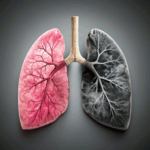
What Is Silicosis? Risks and Legal Rights Explained
April 15, 2025
Artificial Stone Silicosis: A Legal and Medical Emergency
April 29, 2025The Three Forms of Silicosis: What Workers Need to Know
Silicosis is a progressive lung disease caused by inhaling tiny particles of crystalline silica—commonly found in construction, mining, and countertop fabrication. Once inside the lungs, these particles can cause inflammation and scarring that make breathing difficult and, in many cases, lead to lifelong disability or even death. (Fazio, et al., Journal of Occupational Medicine and Toxicology, 2025; 20(1):9, p.10.)
What many don’t realize is that silicosis can develop in three distinct forms, each tied to the duration and intensity of silica exposure. Understanding these forms is crucial for early diagnosis, treatment, and potential legal claims. (Id.)
Chronic Silicosis (Develops Over a Decade or More)
Chronic silicosis is the most common form, typically appearing after 10 or more years of exposure to lower concentrations of silica dust (often under 30% quartz content). (Id.) It usually manifests in two subtypes:
-
Simple silicosis features numerous small nodular spots, often under 10mm in size, located in the upper zones of the lungs. These nodules consist of “whorled” collagen fibers surrounded by dust-laden macrophages.
-
Complicated silicosis, also known as progressive massive fibrosis (PMF), is a more severe form in which the nodules coalesce, causing significant lung impairment. (Id.)
Workers with chronic silicosis may not experience symptoms until the disease is already advanced, making regular health screenings critical in high-risk professions. (Id.)
Accelerated Silicosis (2 to 10 years After Exposure)
Accelerated silicosis develops more quickly—within two to ten years—due to high-level exposure to silica. (Id.)
Imaging results in accelerated silicosis may show both nodular fibrosis (common in chronic forms) and ground-glass opacities that resemble acute silicosis. In some cases, workers may exhibit overlapping features of both chronic and acute disease, which reflects the severity of their exposure and the short timeline in which the disease developed. (Id.)
Acute Silicosis (Weeks to a Few Years)
Acute silicosis, also called acute silicoproteinosis, is the rarest and most aggressive form. It typically develops within weeks to a few years of extremely high silica exposure. Workers in abrasive blasting or those fabricating artificial stone are at the greatest risk. (Id.)
This disease mimics a condition known as pulmonary alveolar proteinosis (PAV), where lipoprotein material accumulates in the air sacs of the lungs, interfering with oxygen exchange. Under a microscope, the material appears positive for PAS (Periodic acid–Schiff) staining and often contains silica crystals that are birefringent in polarized light. (Id.)
“Silica exposure can result in one of three distinct disease patterns of silicosis: chronic silicosis, subacute or accelerated silicosis, and acute silico-proteinosis.” — (Id.)
Artificial Stone Workers Face High Risk of Severe Silica-Related Illnesses
Accelerated and acute forms of silicosis are aggressive, irreversible lung diseases that result from intense exposure to respirable crystalline silica. These conditions cause rapid and permanent damage to lung tissue, leaving patients dependent on continuous oxygen support. Tragically, there is no cure—lung transplantation is the only potential treatment, but many patients decline before a donor becomes available. (Id.)
In the artificial stone industry, the prevalence of these diseases has reached alarming levels, with studies suggesting that as many as 50% to 85% of workers may already be affected—indicating a public health crisis within the sector. (Id.; see also Hoy RF, et al., "Prevalence and risk factors for silicosis among a large cohort of stone benchtop industry workers," Occup. Environ. Med. 2023; 80(8):493-446; Safe Work Australia – August 2023 - Decision Regulation Impact Statement: Prohibition on the Use of Engineered Stone)
Even those not yet diagnosed with acute or accelerated silicosis remain at significant risk. Long-term exposure to silica dust can lead to chronic silicosis, lung cancer, kidney dysfunction, and a range of autoimmune diseases including rheumatoid arthritis, lupus, and systemic sclerosis (scleroderma). These health effects underscore the urgent need legal accountability across the industry. (Id.)
Take Legal Action If You've Been Diagnosed
If you or a loved one has been diagnosed with any form of silicosis, it’s important to act quickly. This is a preventable disease, often allegedly caused by negligence and defective products.
Brayton Purcell LLP has been at the forefront of toxic exposure litigation for over 40 years. We have successfully represented workers harmed by asbestos, silica, and other industrial hazards. Our team understands the medical science, regulatory failures, and corporate accountability required to build a strong case and pursue maximum compensation for our clients.
📞 Call us at (800) 361-2417
📝 Fill out our contact form for a free case evaluation
Brayton Purcell LLP Is Here to Fight for You
You don’t have to face a silicosis diagnosis alone. Our legal team is committed to protecting the rights of workers and families affected by preventable occupational diseases. Whether your condition developed after years of exposure or within just a few months, we’re here to listen—and ready to act on your behalf.














